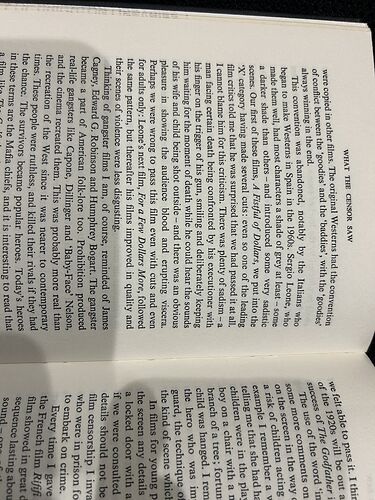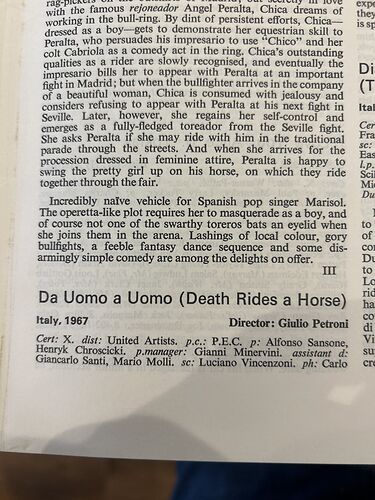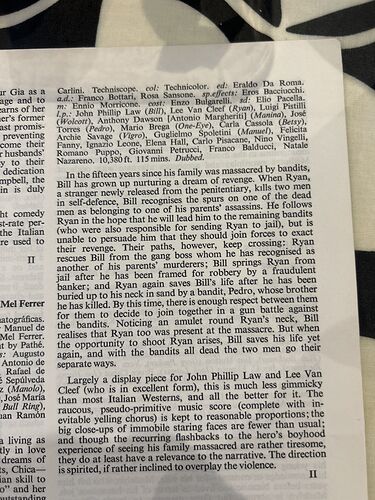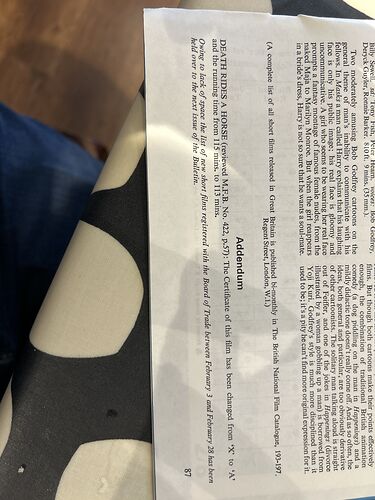DEATH RIDES A HORSE (1967)
Classified ‘X’ for theatrical release in 1968 after the following cuts:
DR1 - Remove close shot of man being stabbed in the stomach.
Reduce to an absolute minimum the scene in which a man is killed and his wife and daughter raped and killed by several men while his small son, in hiding, looks on.
DR4 - Reduce the scene in which Ryan is kicked and beaten-up.
DR5 - Remove both blows on girl’s face.
DR6 - Remove the whole incident of Pedro forcing Bill to eat salt.
The film was never released as an ‘X’. At the last minute, after at least one press screening, the distributor changed its mind and went for an ‘A’ resulting in a number of extra cuts although the ‘X’ cuts were excessive to begin with.
Classified ‘A’ in 1969 after the following cuts (2m):
DR1 - Drastically reduce the attack on a farmhouse; particularly remove the close shot of a man being stabbed in the stomach and the whole incident of a woman and her daughter being raped by several men and killed. (also ‘X’ cuts)
DR3 - Remove the entire incident in which Bill takes a Coloured man back into the saloon, shoots two or three men there and throws another through a window.
Remove the shooting of two men on a balcony and of a third man who then rolls down the stairs.
DR4 - Reduce the scene in which Ryan is kicked and beaten-up. (also ‘X’ cuts)
DR5 - Remove the shots of skulls of men who have been buried up to their necks in the sand.
Remove the blows on the girl’s face. (also ‘X’ cuts)
Remove the close shot of Paco’s dead face with a bullet hole in the forehead.
Remove the bull whipping of Bill by Pedro.
DR6 - Remove the whole incident of Pedro forcing Bill to eat salt. (also ‘X’ cuts)
DR7 - Reduce the killings and the violence in this reel, especially in the scenes where Ryan drowns a man in a water trough and where two men are crushed by an over-turning wagon.
Re-Rated AA (in cut A version) in July 1970.
Cuts waived for ‘15’ rated MGM DVD. Also played uncut on BBC TV before this (when I first saw it).



